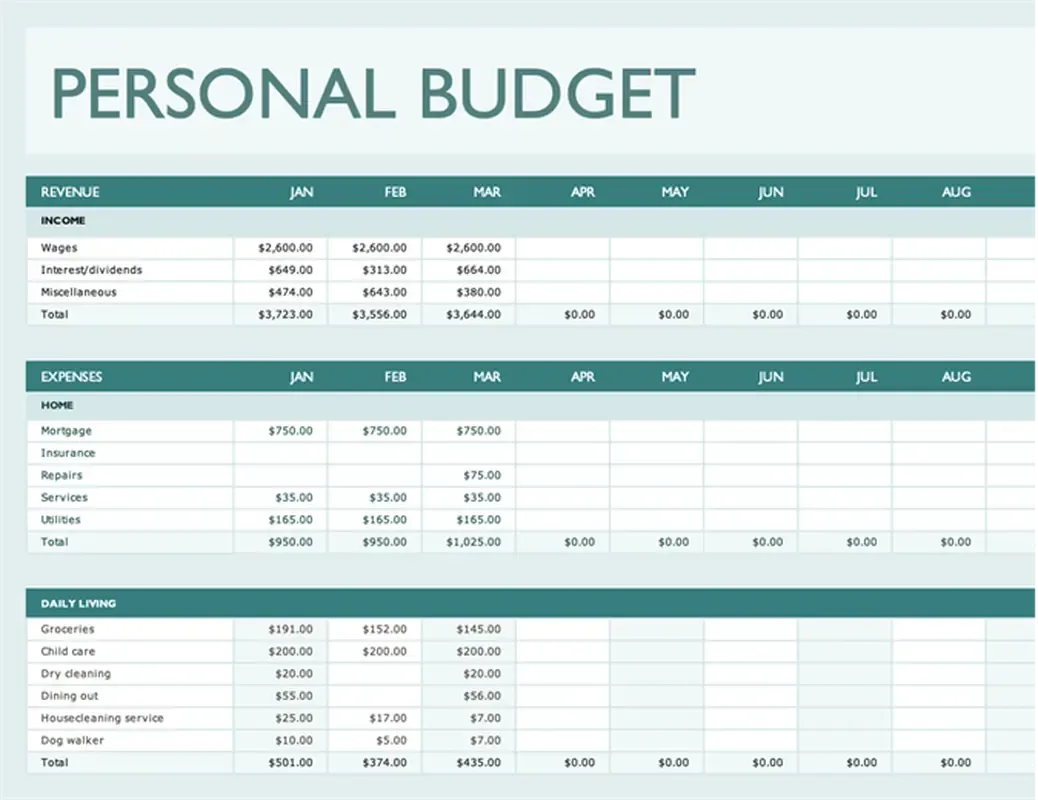

Let’s explore this topic in more detail with Monkey Mart below. Budgeting is a crucial aspect of personal finance that can help you take control of your money and achieve your financial goals. In this article, we’ll explore some of the best free budgeting tools and templates available to help you manage your finances effectively.
Budgeting is the foundation of sound financial management. It allows you to track your income and expenses, identify areas where you can cut costs, and allocate your resources more efficiently. By creating and sticking to a budget, you can reduce financial stress, avoid overspending, and work towards your long-term financial objectives.
Many people avoid budgeting because they think it’s too time-consuming or complicated. However, with the right tools and templates, budgeting can be simple, straightforward, and even enjoyable. In this article, we’ll introduce you to some of the best free budgeting tools and templates that can help you take control of your finances without breaking the bank.
Read more: Investing for Beginners: Where to Start With $100 or Less
In the digital age, there are numerous online tools available that can help you create and manage your budget with ease. These tools often come with features like automatic expense tracking, bill reminders, and visual reports to help you understand your spending patterns. Here are some of the best free online budgeting tools:
Mint is one of the most popular free budgeting tools available. It allows you to connect all your financial accounts in one place, automatically categorizes your transactions, and provides a comprehensive overview of your spending. Mint also offers bill tracking, credit score monitoring, and investment tracking features.
One of the standout features of Mint is its ability to create personalized budgets based on your spending habits. It analyzes your transaction history and suggests budget categories and limits that are realistic for your lifestyle. You can then adjust these suggestions as needed.
Mint also provides visual representations of your financial data, including graphs and charts that make it easy to see where your money is going. This can be particularly helpful in identifying areas where you might be overspending.
While Personal Capital is primarily known for its investment tools, it also offers excellent budgeting features. Like Mint, it allows you to connect all your financial accounts and provides a holistic view of your finances.
Personal Capital’s budgeting tool categorizes your expenses and allows you to set spending targets for each category. It also provides a cash flow analyzer that shows you how much you’re earning versus spending each month.
One of the unique features of Personal Capital is its retirement planner. This tool helps you project your future financial needs based on your current savings and spending habits, making it an excellent choice for those who want to combine budgeting with long-term financial planning.
EveryDollar is a budgeting tool created by personal finance expert Dave Ramsey. It follows the zero-based budgeting method, where you assign every dollar of your income to a specific category until you reach zero.
The free version of EveryDollar requires manual input of transactions, which can be time-consuming but also helps you become more aware of your spending habits. The tool allows you to set up budget categories, track your spending, and see how much you have left in each category as the month progresses.
EveryDollar is particularly useful for those who want a simple, straightforward budgeting tool without a lot of extra features. Its clean interface and easy-to-use design make it accessible even for those new to budgeting.
While online tools offer convenience and automation, some people prefer the hands-on approach of using spreadsheets or printable templates for budgeting. These methods give you complete control over your budget and can be customized to fit your specific needs. Here are some excellent free budgeting templates:
Google Sheets offers a variety of free budget templates that you can use and customize. These templates range from simple monthly budgets to more comprehensive annual financial planners.
One popular option is the Monthly Budget template. This template includes sections for income, expenses (broken down into categories like housing, transportation, food, etc.), and savings. It automatically calculates your total income, expenses, and the difference between the two, giving you a clear picture of your financial situation.
The advantage of using Google Sheets is that your budget is accessible from any device with internet access. You can also easily share your budget with family members or financial advisors if needed.
Microsoft Excel offers a wide range of free budget templates that you can download and use. These templates are often more detailed and feature-rich than their Google Sheets counterparts.
One standout template is the Personal Monthly Budget template. This comprehensive template includes sections for income, expenses, savings, and debt payments. It also provides visual representations of your budget in the form of pie charts and graphs.
Excel’s templates often include features like color-coding to highlight areas of concern (like overspending in certain categories) and the ability to track your budget over multiple months or even years.
For those who prefer a pen-and-paper approach, there are many free printable budget worksheets available online. These worksheets can be particularly useful for visual learners or those who find the act of physically writing down their budget helps them stick to it.
The Kakeibo method, a Japanese budgeting system, offers a simple yet effective printable budget template. This method focuses on four main categories of spending: needs, wants, culture, and unexpected expenses. By manually writing down each expense and categorizing it, you become more mindful of your spending habits.
Another popular printable option is the envelope budgeting system worksheet. This method involves allocating cash to different expense categories (represented by physical envelopes) at the beginning of each month. The worksheet helps you plan how much to put in each envelope and track your spending throughout the month.
Read more: How to Stop Living Paycheck to Paycheck
While having the right tools and templates is important, the success of your budgeting efforts ultimately depends on how you use them. Here are some tips to help you make the most of your chosen budgeting method:
When creating your budget, it’s important to be realistic about your income and expenses. Don’t underestimate your spending or overestimate your income. Look at your past bank and credit card statements to get an accurate picture of your typical monthly expenses.
Remember that your budget should reflect your actual lifestyle, not an idealized version of it. If you enjoy eating out occasionally, budget for it instead of assuming you’ll suddenly start cooking every meal at home. This realistic approach makes your budget more sustainable in the long run.
Many people make the mistake of only budgeting for their expenses and forgetting about savings and debt repayment. Make sure your budget includes categories for emergency savings, long-term savings goals (like buying a house or retirement), and payments towards any debts you may have.
A good rule of thumb is to aim to save at least 20% of your income. This can be adjusted based on your financial situation and goals, but having a savings target in your budget is crucial for long-term financial health.
Your budget shouldn’t be a static document. Life changes, and your budget should change with it. Set aside time each month to review your budget and see how well you stuck to it. If you consistently overspend in certain categories, it might be time to adjust your budget or look for ways to cut costs in those areas.
Also, don’t forget to update your budget when your financial situation changes. This could be due to a pay raise, a new job, or changes in your living situation. Regular reviews ensure your budget remains relevant and useful.
While most budgeting tools and templates come with predefined categories, don’t be afraid to customize these to fit your specific needs. For example, if you’re a freelancer with irregular income, you might want to create separate categories for different types of work or clients.
The key is to make your budget as intuitive and easy to use as possible. The more it reflects your actual lifestyle and financial habits, the more likely you are to stick to it.
For your budget to be effective, you need to track every expense, no matter how small. Those daily coffee purchases or occasional impulse buys can add up quickly and throw off your budget if not accounted for.
If you’re using a digital tool, make sure to log your expenses regularly. For those using manual methods, consider keeping a small notebook with you to jot down expenses on the go, or use your smartphone’s notes app for the same purpose.